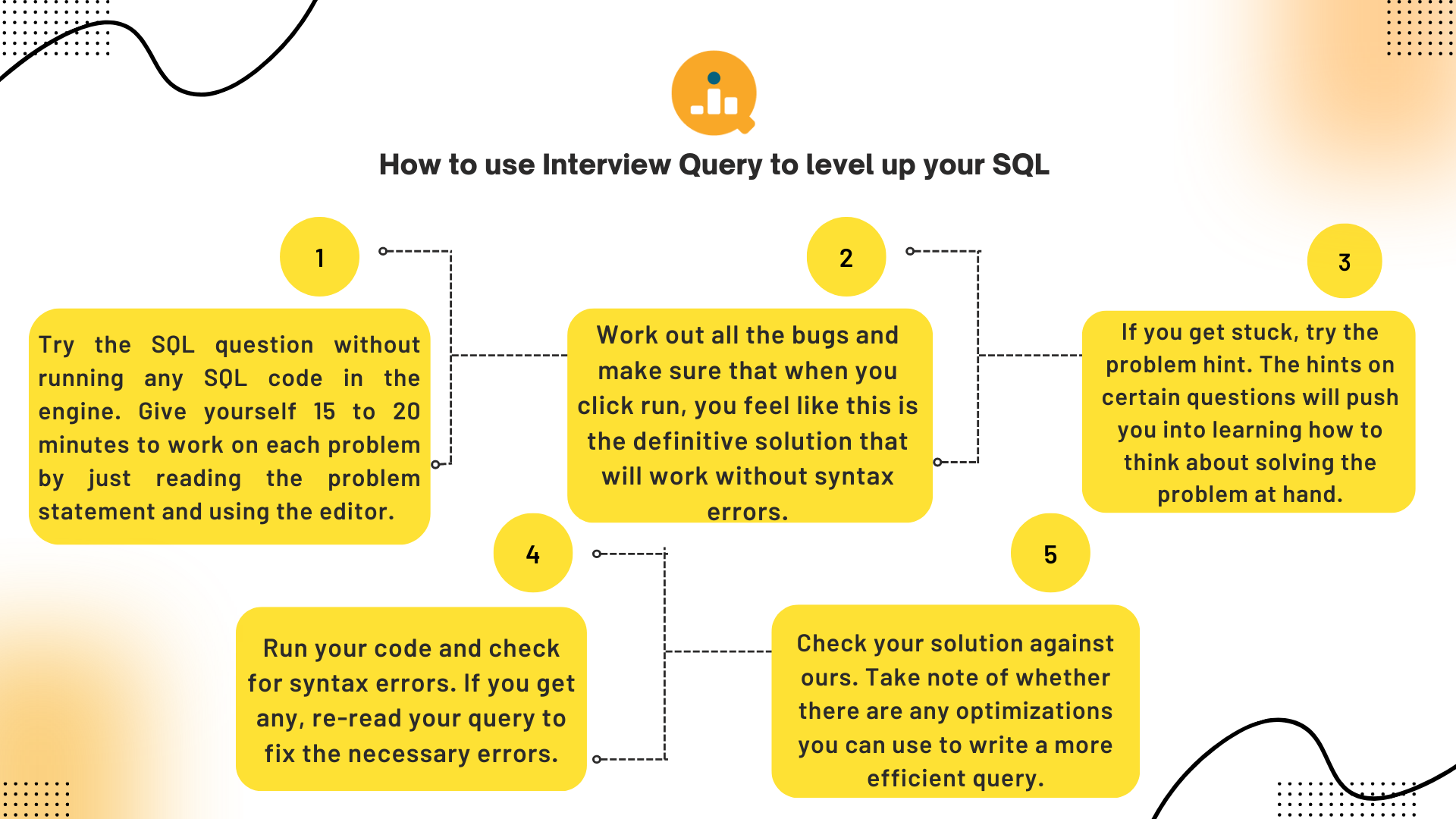How to approach SQL questions
What do SQL questions look like?
We have seen that SQL works by asking a database to retrieve useful information in tables of manageable size.
Writing a query consists of telling a database what small table it should retrieve. The raw materials to build it are the large tables stored in our database.
Every question specifies the information we need to know about these tables, which is:
- The tables’ names.
- The column names for each table.
- Each of the columns’ data types.
The input section tells us what the large tables in our database look like, while the output section tells us what the table we’ll retrieve should look like.
Example:
Employees table
| Column Name | Data Type |
|---|---|
| ID | INTEGER |
| FIRST_NAME | VARCHAR |
| LAST_NAME | VARCHAR |
| SALARY | INTEGER |
| DATE_HIRED | DATE |
How to approach SQL questions
When at an interview, you’ll need to get the questions right the first time. This may seem like a difficult task, but with lots of practice, it’s definitely doable.
Here’s how you should approach each problem to make the most out of this learning path:
- Try the SQL question without running any SQL code in the engine. Give yourself 15 to 20 minutes to work on each problem just by reading the problem text and using the editor.
- Make sure that when you click run, you feel like this is the definitive solution that will work without bugs or syntax errors.
- We prepared a few hints for each problem. Ask for a hint only if you genuinely tried to solve the problem without it. Try to solve the problem without asking for another one.
- Run your code. If you used all our hints and still find errors, some questions include a gotcha section that addresses usual mistakes.
- Once you have a solution, check it against ours. Take note of whether there are any optimizations you could have used to write a clearer or more efficient query.

48%
CompletedYou have 29 sections remaining on this learning path.
